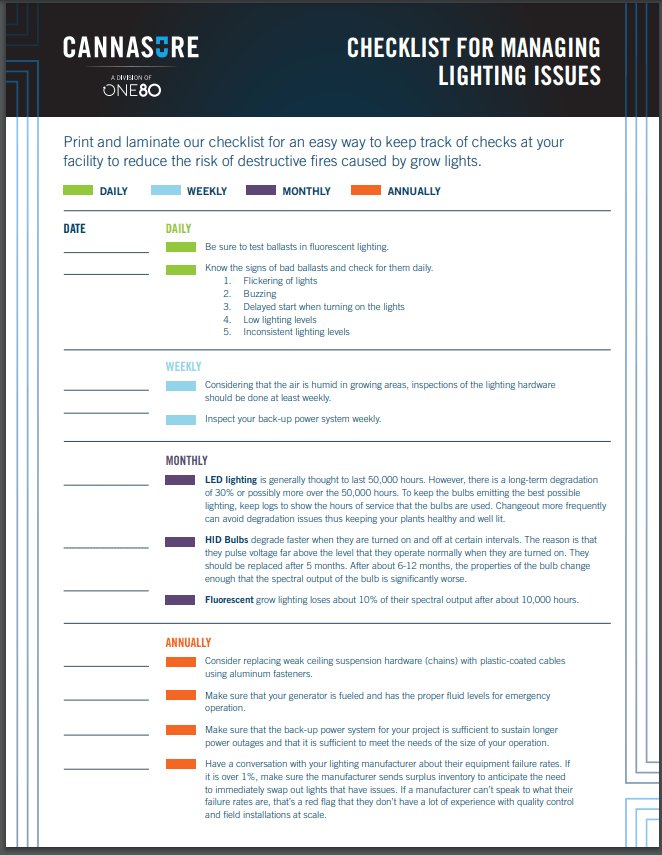Cleveland based Cannasure Insurance Services is offering an industry first check list for cultivators to help reduce the chance of exploding lights. A checklist is unique since it offers tangible recommendations on a weekly, monthly, and yearly basis.

Why are they doing this?
The material from exploding grow lights will cause plastic trays used to contain cannabis plants to ignite. The damage from these events is a nightmare for the business and insurance carriers. The damage can lead to millions of dollars in property damage with plants destroyed, soot filled ventilations systems, unusable ballasts, and inoperable electrical systems. Worst case scenario is the building burns down and lives are lost.
Recommendations by Cannasure include daily awareness of buzzing sounds from ballast, lights flickering, and lights that start in a delayed manner. Before buying lights a conversation with the manufacturer to discuss failure rates is worth the time. A red flag warning occurs when the lighting manufacture will not disclose or discuss their failure rates. This is an excellent information to help determine if a manufacturer is worth the risk.
Other carriers will list their recommendations on the quote
The list includes light fittings and lams are according to the operating instructions, position lighting to avoid particles from igniting combustible material, and replacing bulbs appropriate for the ballast.
Insurance risk too high when certain grow light combinations cause the most problems
According to Canopius US Insurance, a 100% led lighting system is the gold standard for reducing possible insurance claims. If you’re not LED, then be prepared to answer a series of questions on the type of ballasts and lighting manufacturers being utilized.
The one question to result in a automatic declination of your insurance request is if metal halide bulbs are used in high pressure sodium ballasts. The combination of these two products is problematic because of electrical incompatibility. In fact, the underwriting manual warns underwriters “The Leading Cause of Fire Losses in Cultivation Facilities Comes from HID Grow Bulb/Ballast Incompatibility.”
